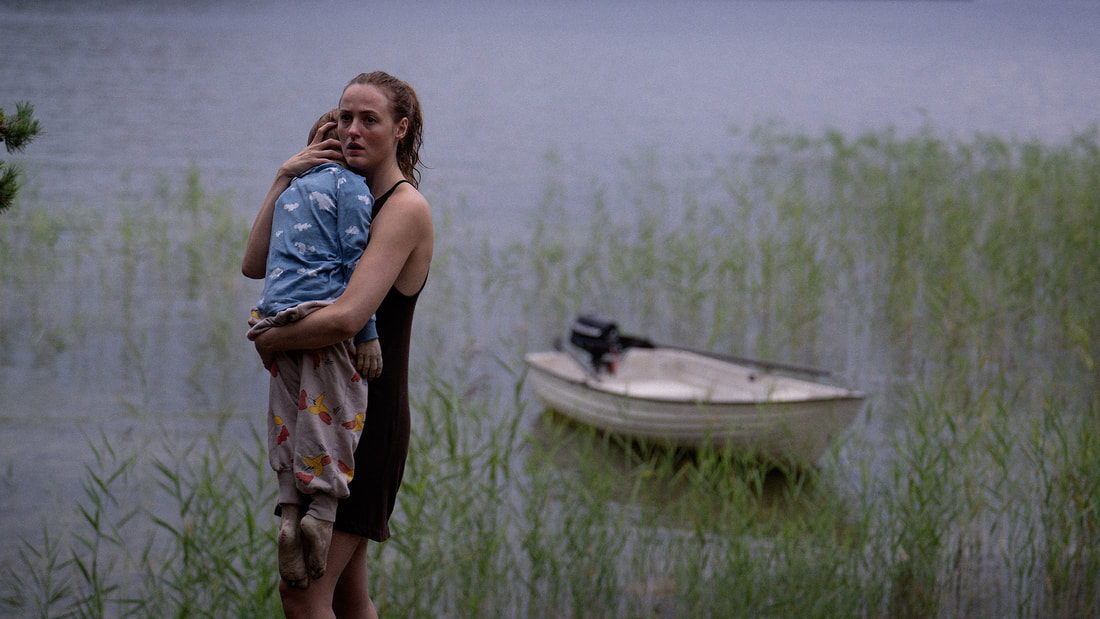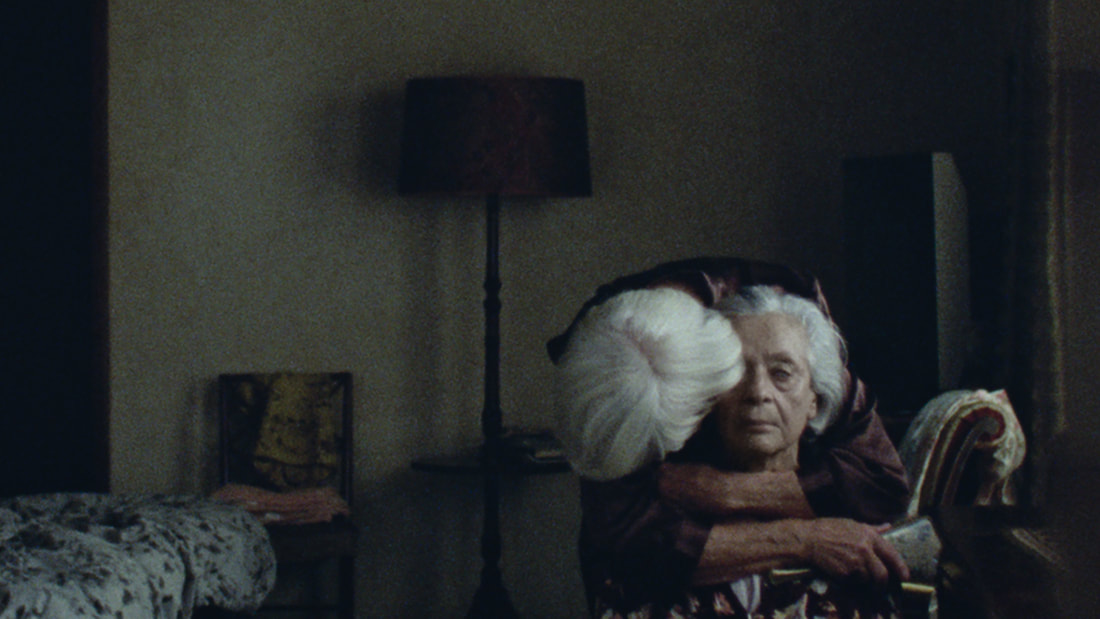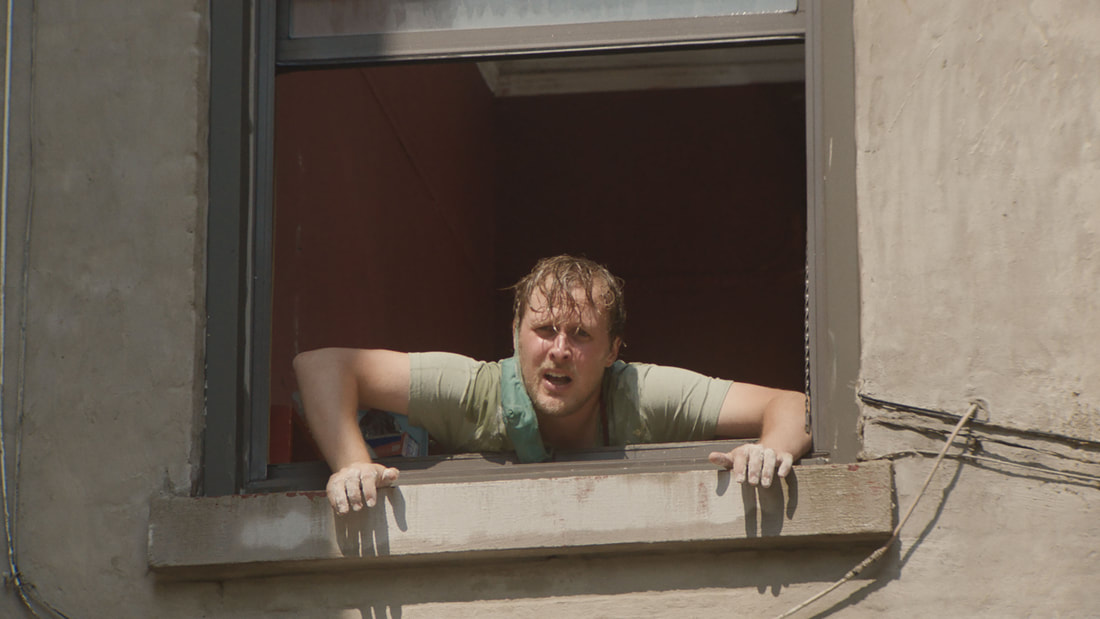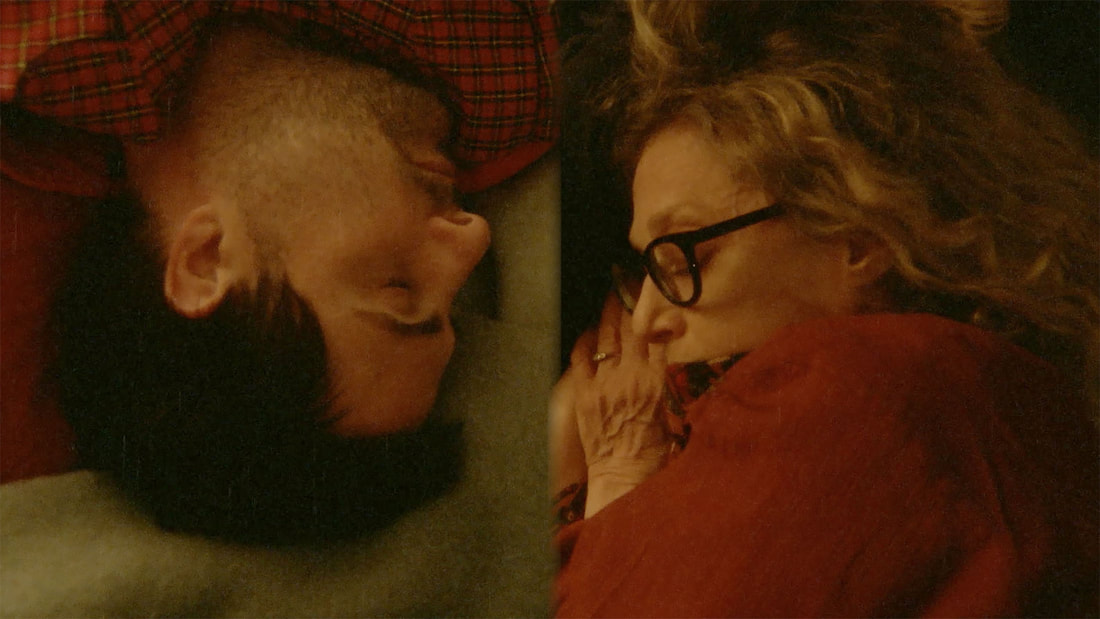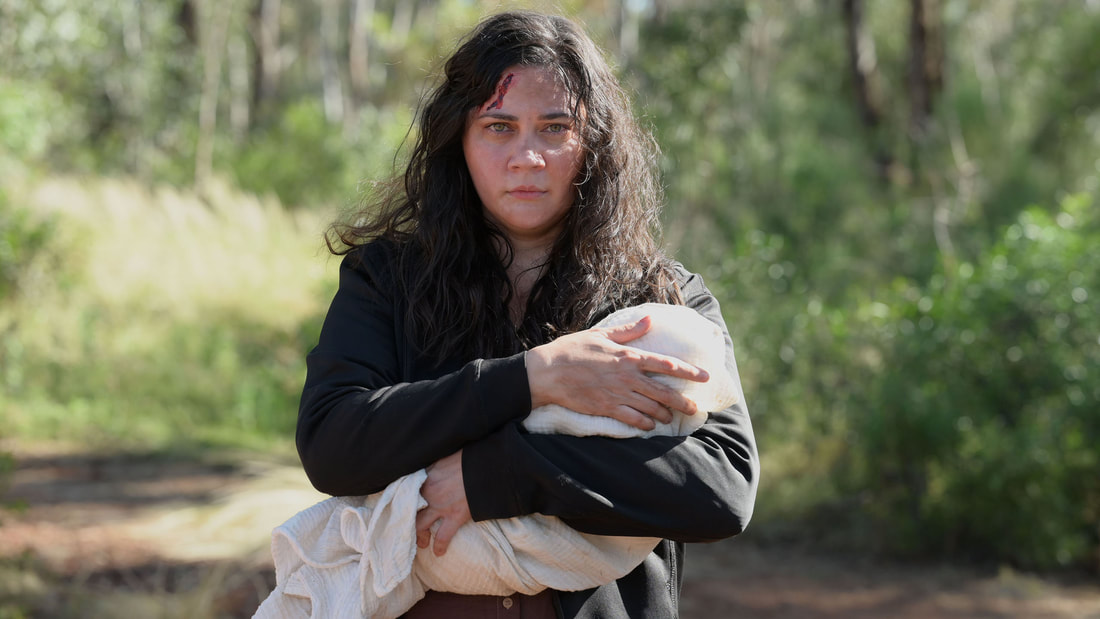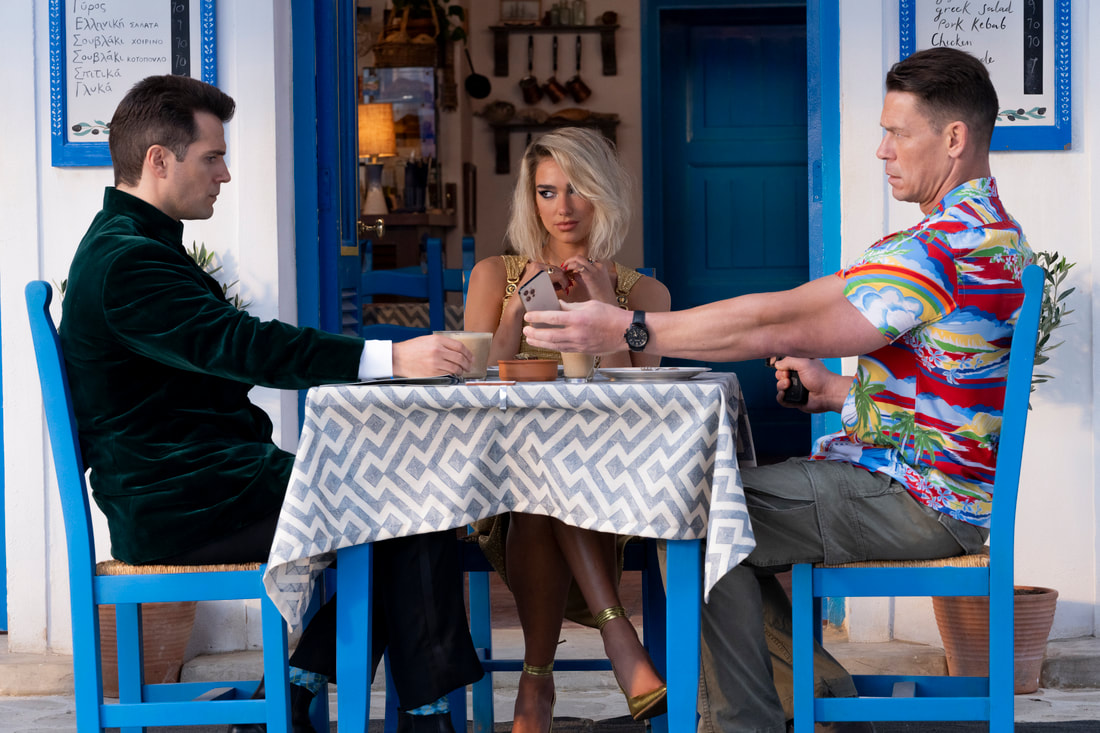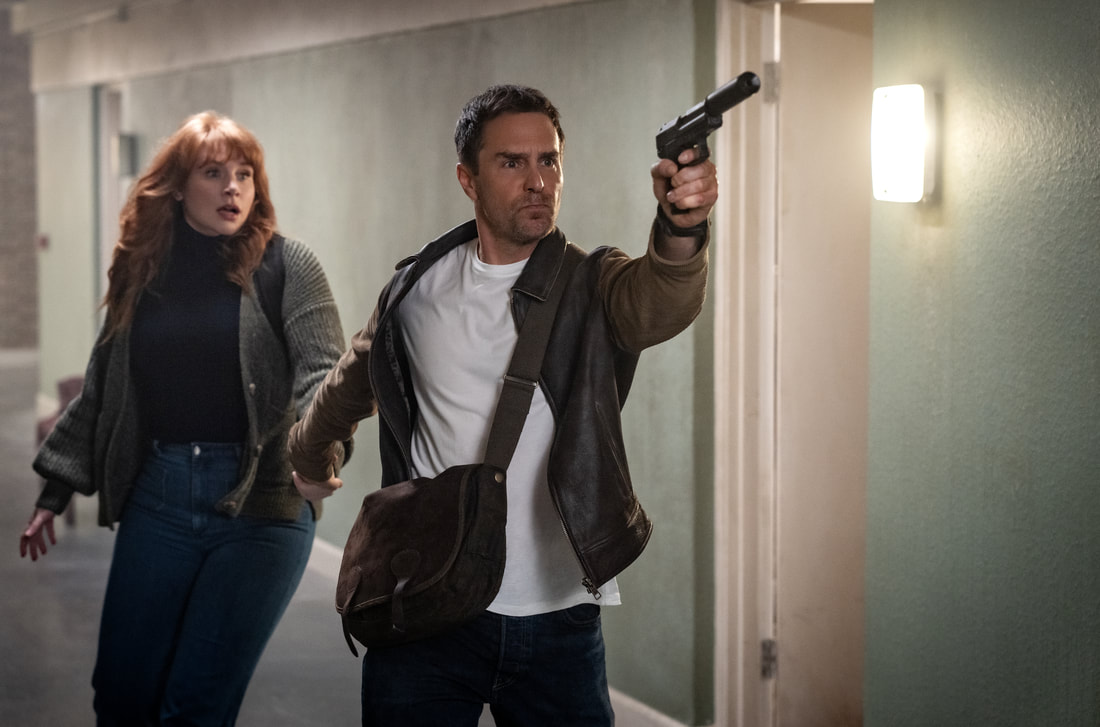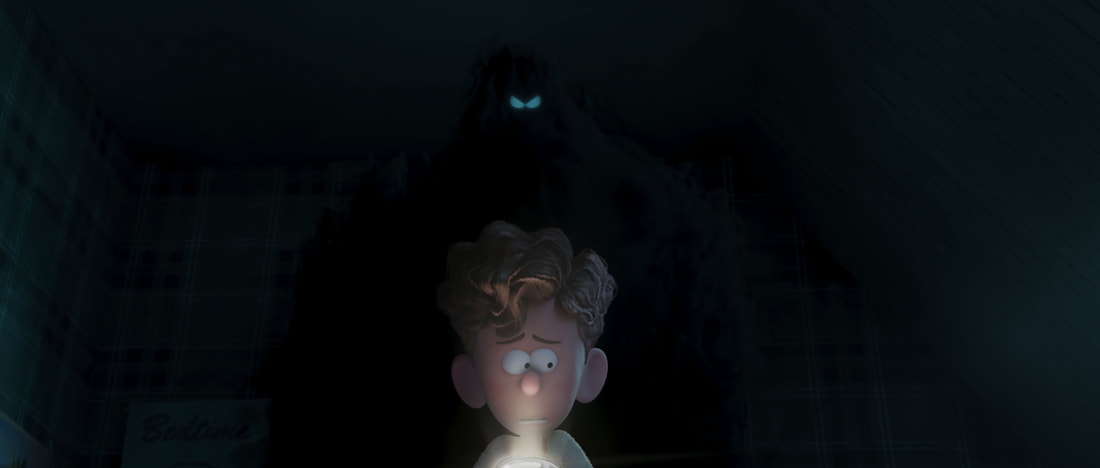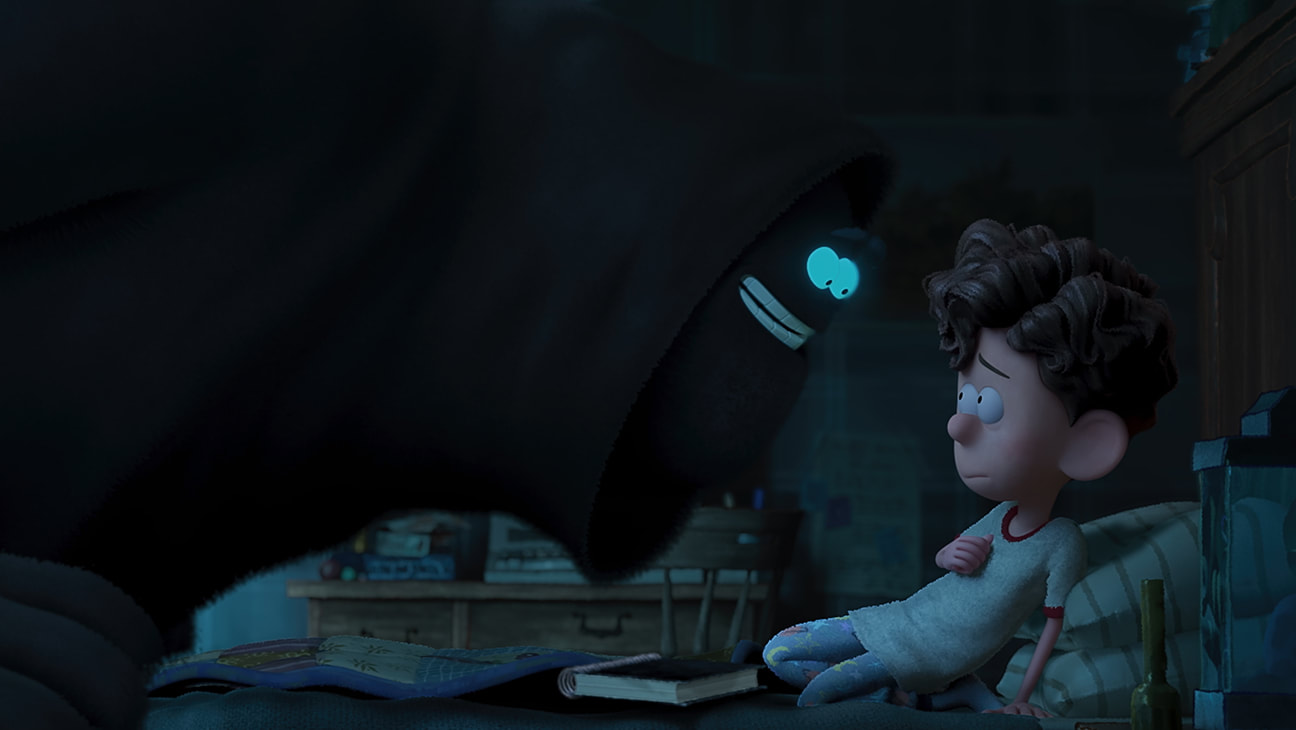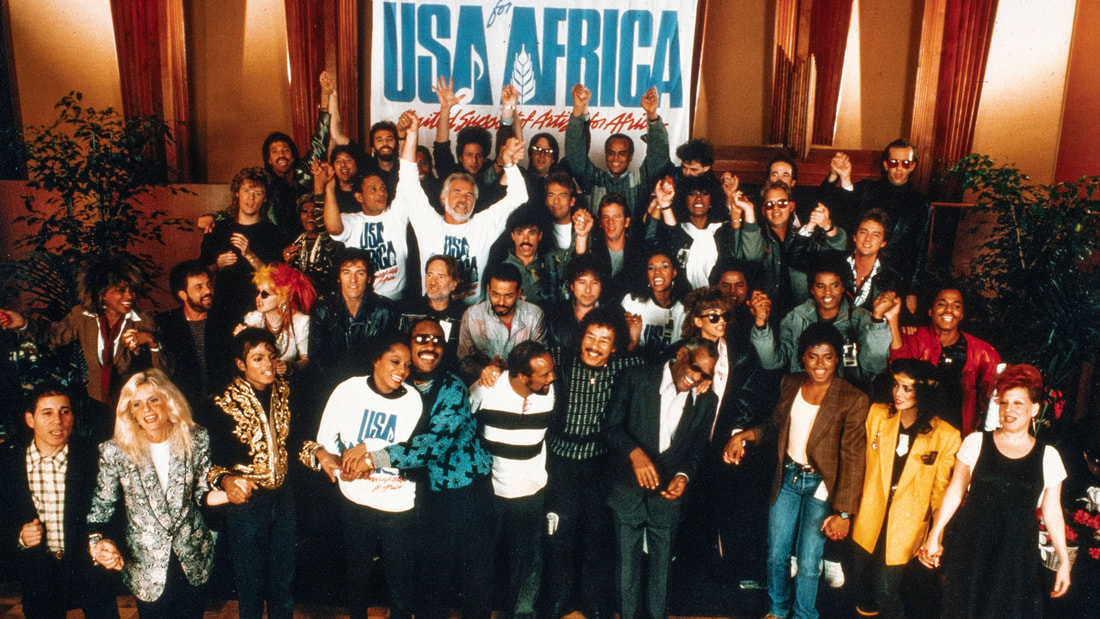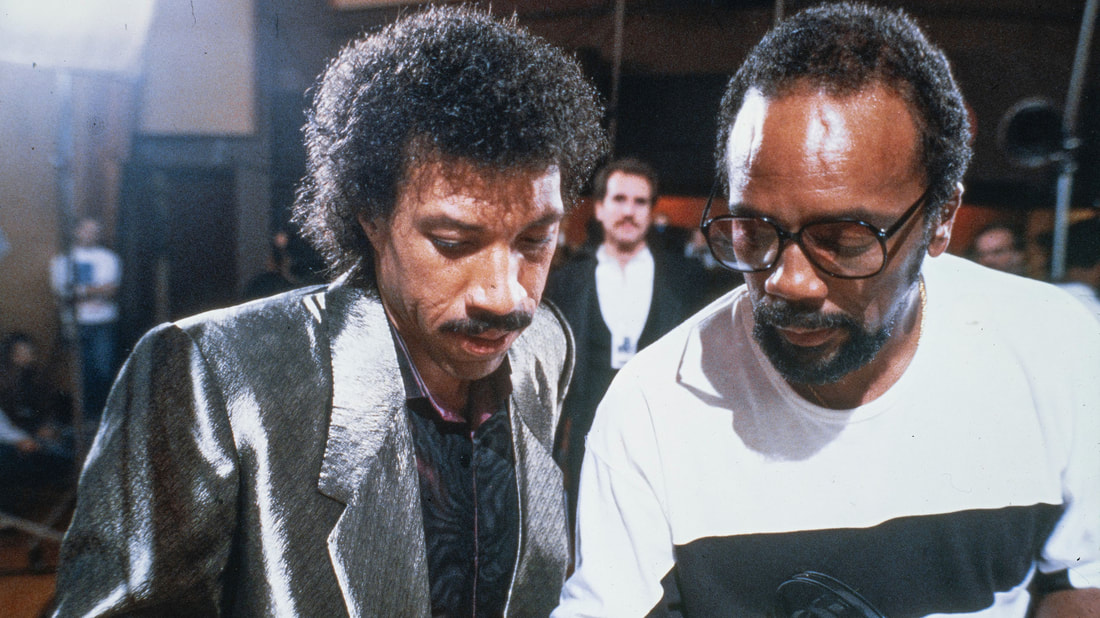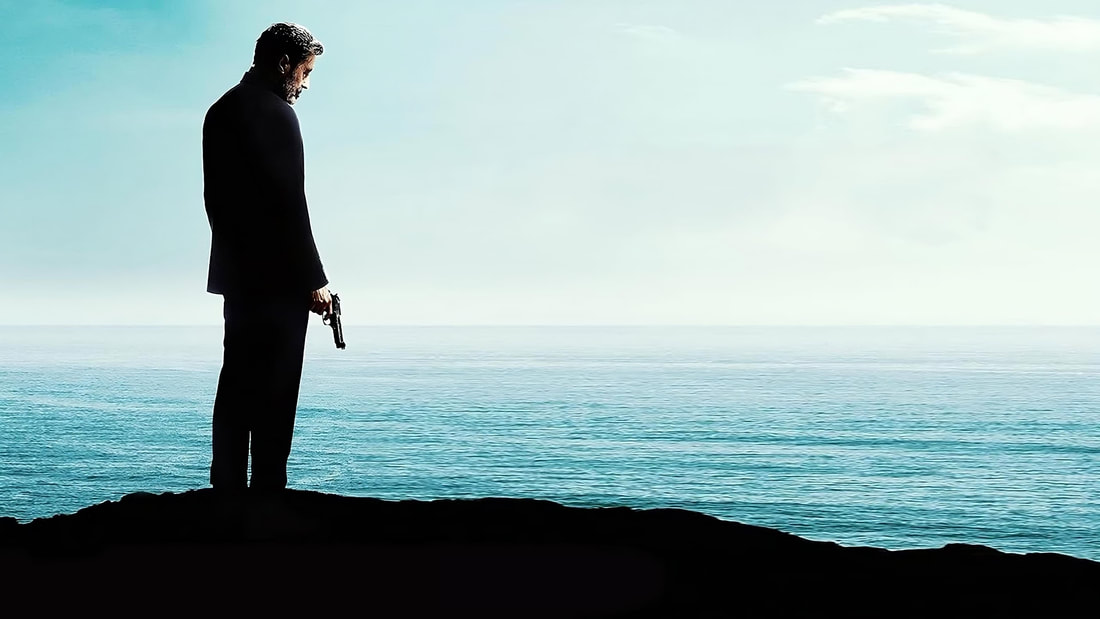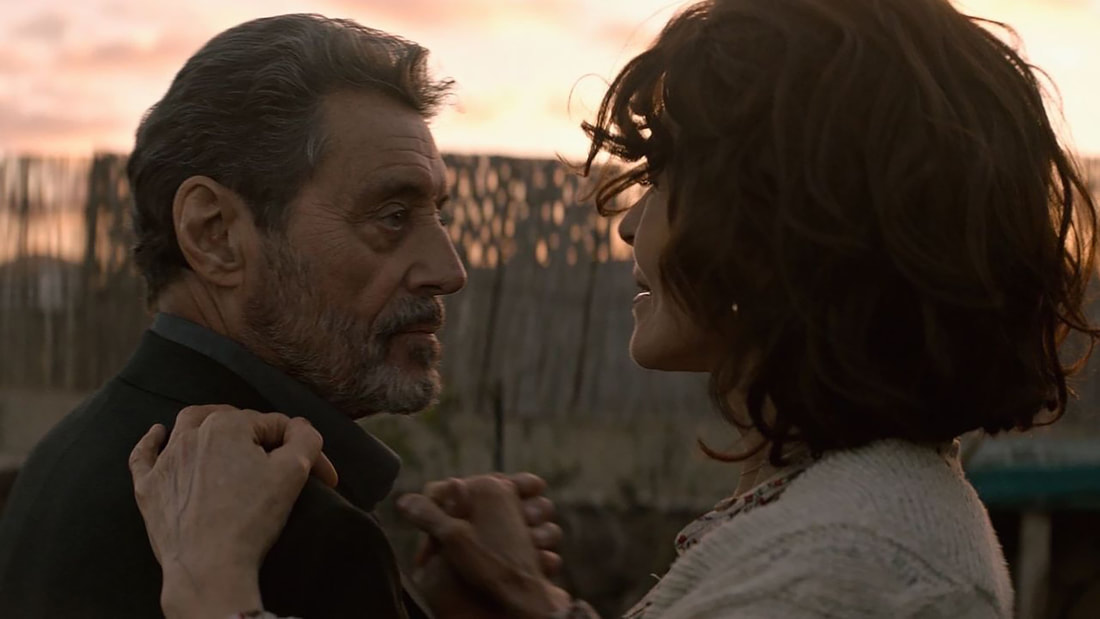|
Review by Sean Boelman
An existential zombie movie from the writer of one of the most humanistic horror movies of the century and starring one of the most exciting new stars of the decade might sound paradisiacal to many cinephiles. While Handling the Undead has an intriguing premise and lots of potential due to the talent involved in the film, it ends up feeling too lethargic to be particularly engaging.
The movie follows three families who go through a flurry of emotions when a bizarre signal causes migraines and brings the dead back to life, including their loved ones. Based on a book by John Akvide Lindqvist (Let the Right One In), this is clearly meant to be another meditative spin on familiar monster tropes, but it is far less effective. Handling the Undead is weighed down by pacing that is extremely slow. And while a slow burn can often be effective, the moments of excitement in this are so sporadic and few that it fails to draw viewers in. Director Thea Hvistendahl creates a fittingly eerie atmosphere, but creepiness alone is not enough to carry the film. One of the most frustrating things about Handling the Undead is that it attempts to juggle so many storylines. Although any of the three storylines would have been compelling on their own, cutting between them prevents the viewer from ever getting fully immersed in the movie — or feeling the emotional impact it could have had. However, this is a consequence of shortening a book that’s nearly 400 pages into a movie that’s only 97 minutes long.
It is a shame that the film feels overstuffed, as some truly brilliant performers are in the cast. The movie serves as a “reunion” of sorts for The Worst Person in the World co-stars Renate Reinsve and Anders Danielsen-Lie. (However, marketing it as such is a bit of a misnomer, as the duo are in completely separate storylines.) Yet, despite the cast having so much talent, they don’t get to do anything because of how thin the script is.
The film does have a lot to say, particularly about the topics of grief and moving on. However, it’s not particularly rewarding or enriching, and it’s hard to recommend sitting through such a slog to get to a purposefully vague and frustrating ending. You have to admire the movie for its ambition and taking such a radically different approach to its genre, but it doesn’t always work. Handling the Undead does have some very impressive technical aspects. The cinematography by Pål Ulvik Rokseth is stunning — almost transfixing enough to make up for how uninteresting the script can sometimes be. Also of note is the makeup work, which is often fantastic, such as the design of the undead son of Reinsve’s character. With the caliber of talent involved in Handling the Undead, both in front of and behind the camera, this should have been absolutely incredible. Unfortunately, sluggish pacing and a thin and disorganized narrative prevent the film from making the impact it could have had. Still, those who do watch the movie will enjoy its visual magnificence. Handling the Undead screened at the 2024 Sundance Film Festival, which ran January 18-28 in-person in Park City, UT and online from January 25-28. Rating: 2.5/5
0 Comments
Review by Sean Boelman
For a while there, the film festival circuit was dominated by films shot during and/or about the COVID-19 pandemic, and while we’re mostly past that stage of the film industry, there are a few stragglers. Theda Hammel’s Stress Positions is not what you might expect from that setup, though, using its setting to dive deeper into far more complex themes.
In the film, John Early plays a man in quarantine caring for his 19-year-old model nephew in the middle of the COVID-19 pandemic, as everything around him seems to be going wrong. A lot is happening in Stress Positions, and the amount of energy and hecticness will understandably be off-putting to some. Still, there’s a strangely resonant through-line to be found amidst all the anxiety. The glue of this film is Early, whose performance is incredibly chaotic in a way that few actors could pull off without being absolutely detestable — and thankfully, Early does. Early is just incredibly exasperated for so much of the runtime, and it’s great because we feel like we can laugh at him but feel bad for him at the same time. The rest of the cast also has moments to shine. Hammel herself plays a pivotal supporting role and essentially serves as the emotional counterweight to Early’s wackiness. Qaher Harhash starts as a lovable goof, but by the third act, his performance evolves into something much more subtle and quietly poignant. Finding a film with more esoteric humor than Stress Positions would be hard. There are a lot of jokes and situations that only certain people are likely to find funny. Some are aimed at queer people, others are aimed at New Yorkers, and more yet at multicultural individuals. If you don’t fall into one (or more) of the groups Hammel is speaking to with this film, you might be out of luck. However, the parts of Stress Positions likely to stick with audiences long after the credits roll are not the jokes but the poetic stretches driven by narration split between Hammel and Harhash. Although the film is literally about the isolation of the COVID-19 pandemic, Hammel finds a way to spin this universal anxiety into something more specific — namely cultural anxiety and queer anxiety — both of which are expressed more bluntly here than a lot of films have done in the past. From a technical standpoint, the film is exceptionally frenetic and sometimes even ugly. Since Hammel’s goal is to capture the zeitgeist of the moment we felt during a locked-down summer, this sweaty, messy look works quite well. The one thing that doesn’t exactly work is the juxtaposition with some of the film’s calmer moments, which stick out. Stress Positions is not a film that everyone will appreciate, but it’s also not a film that was made for everyone. Unlike many COVID-19 films in the past, Theda Hammel uses this collective anxiety in a way that feels incredibly personal and idiosyncratic, making this stand out far more than some of the pandemic-themed productions we’ve seen. Stress Positions screened at the 2024 Sundance Film Festival, which ran January 18-28 in-person in Park City, UT and online from January 25-28. Rating: 4/5
Review by Sean Boelman
Gonzo documentaries are extremely difficult to pull off, but they can be incredibly compelling when done well. Well, Seeking Mavis Beacon is not just a gonzo documentary but also an experimental one, at that, and while it’s not perfect, it’s hard not to admire the filmmaker’s vision for this story.
In the film, director Jazmin Renée Jones and her friend Olivia McKayla Ross set out on a quest to pay homage to the ‘80s educational game Mavis Beacon Teaches Typing. However, this soon evolves into a wild goose chase to find the Haitian-born cover model who dropped off the grid decades earlier. Although anyone can apply a bit of logic after the first act to figure out where the search is headed, it’s still an incredibly engaging journey. The one thing that can be a bit off-putting about Seeking Mavis Beacon is that it feels, at times, like the filmmakers are trying to protect themselves with the camera. For example, Jones films a disagreement with the landlord of the studio she is working in. It’s one thing to take the gonzo approach of your investigation becoming the story, but it’s another to create extra obstacles for narrative tension that aren’t necessarily relevant to the issues at hand. However, Jones has plenty to explore thematically, so we can forgive some of her indulgences. The documentary starts as an exploration of Blackness, as Jones explains how seeing representation like that in Mavis Beacon Teaches Typing influenced her life. However, it soon evolves into something more complex, addressing themes of feminism and digital rights, the latter of which has hardly ever been more relevant than it is today.
The critical aspect that holds Jones’s documentary together is her friendship with Ross. Frankly, the story they’re investigating is pretty obscure and doesn’t make much difference on its surface. Yet, Jones establishes this story's personal stakes for her — and her friend — which will keep viewers invested.
Seeking Mavis Beacon also does a better job of exploring the role that documentary ethics plays in gonzo filmmaking than many other films in the style. The entire back half of the movie, as they try to find their “missing” person, Jones and Ross begin to wonder whether this person even wants to be found — an obvious question to ask, but one that so few documentary filmmakers have engaged with in the past. As far as the style goes, Jones clearly knows how to craft an engaging story. The technological aspect of the story plays a significant role in the film’s execution, as many parts show Jones and Ross’s computer screens as they explore new clues in their investigation. Jones also wisely avoids talking heads as much as possible, favoring discussions instead of people talking to the camera. Seeking Mavis Beacon is an excellent investigative documentary exploring a story one might not have expected to be as fascinating as this. Although many might be drawn to watch this movie out of nostalgia, they will be surprised to see how deeply it explores some of its more complex elements. Seeking Mavis Beacon screened at the 2024 Sundance Film Festival, which ran January 18-28 in-person in Park City, UT and online from January 25-28. Rating: 4.5/5
Review by Sean Boelman
Sometimes, the best humor comes from situations that are incredibly uncomfortable to watch. With turns from Jason Schwartzman and Carol Kane that rank among the best work of both their illustrious careers, Between the Temples is a cringe comedy that gets a lot of laughs, but never loses sight of its emotional core.
The film follows a recently widowed cantor in a Jewish temple experiencing a crisis of faith who has an unexpected change in perspective on life when his music teacher from grade school enrolls in his bat mitzvah class. Silver and C. Mason Wells’s script has quite a few elements we have seen before, but not exactly in this combination, making the film feel pretty refreshing. At first, Silver’s decision to shoot the film on 16mm feels slightly off-putting. It gives the film (what seems to be) a needlessly retro vibe, contrasting with some of the more modern elements of the story and humor, such as mentions of Jdate. However, in the final act, when sweetness gives way to anxiety, the aesthetic choices begin to make a lot more sense. For the first hour or so of the film, it moves along leisurely, taking several tangents that seem only to delay the inevitable. Although the film threatens to go entirely off-course a few times, it’s easy to be drawn back in by its lighthearted charm — that is, until the time bomb finally explodes in a hilarious climax that is one of the funniest scenes you will see all year. Whether or not you find Between the Temples enjoyable will depend on how funny you find cringe comedy. The first two-thirds have a good laugh here or there with an uncomfortable situation, but in the final thirty minutes, if you find awkwardness funny, you’ll laugh incredibly hard while covering your eyes out of secondhand embarrassment. Jason Schwartzman has hardly been better than he is here. Thanks to his work with Wes Anderson, cinephiles are probably most used to seeing deadpan-style humor from the character actor. And last year’s Anderson film, Asteroid City, allowed him to tap into his more vulnerable side. In Between the Temples, Schwartzman shows that vulnerability while also showcasing a more oafish type of humor than usual — and yet, he’s as charming as always. Carol Kane is so well-cast in the film that it feels like the role was almost written for her. She’s the epitome of lovable, but she also has the quality of a live wire that this role calls for. The one casting that feels a little off is Dolly De Leon, who feels entirely underused in a role that doesn’t have much humor or screen time. For much of its runtime, Between the Temples is a charming and funny little film, but in the third act, it turns into something gut-bustingly hilarious. Offering both humor and heart in spades, Nathan Silver’s latest is a can’t-miss — so long as you have a stomach for incredibly awkward situations. Between the Temples screened at the 2024 Sundance Film Festival, which ran January 18-28 in-person in Park City, UT and online from January 25-28. Rating: 4/5
Review by Sean Boelman
Australian horror is experiencing a renaissance after the breakout success of last year’s Talk to Me, so don’t be surprised if more spooky flicks from Down Under start popping up on the festival circuit. Jon Bell’s The Moogai, adapted from his short of the same name, hopes to cash in on that success but is unfortunately far too bland to make much of a splash.
The film follows a young couple who, having just welcomed their second child into the world, begin to suspect that there may be an ancient spirit trying to take their baby from them. As is the case with many feature films adapted from shorts, The Moogai really struggles to expand upon its concept in a compelling way. There are some interesting themes in the film about the colonial past of Australia and how many Indigenous Australians have felt pressure to assimilate into modern society and abandon their cultures — and superstitions. However, these feel somewhat underdeveloped, with the film instead leaning on more generic themes surrounding trauma and motherhood. Surprisingly, Bell’s script does a very good job of getting the audience to side with the protagonist. Of course, the nature of the story is that she does some really terrible things due to the hallucinations she is experiencing. Yet there’s still such a sense of sadness and regret to the character that the audience never loses sympathy for her. Unfortunately, while the characters can be compelling, the acting is pretty subpar across the board. Shari Sebbens plays the lead role in a way that feels entirely lacking in authenticity, and while Meyne Wyatt is meant to be a very supportive partner to Sebbens’s character, he plays it aloof in a way that creates an awkward distance. Bella Heathcote also has a supporting role in the film, but it’s so insignificant that it feels like she was cast simply to raise the film's profile. Where Bell shoots himself in the foot, though, is the pacing of the film. It’s never scary, and while the film is constantly building to an explosive end, the conclusion we get feels mostly anticlimactic. The entire third act is so rushed, in fact, it almost feels like they ran out of money and had to cut several scenes. From a technical standpoint, the film has the qualities of a particularly cheesy studio horror flick. The score is overbearing and generic, trying so desperately to ramp up the tension in scenes that don’t deserve it that it’s frankly embarrassing. The visual effects aren’t very good, either, including the creature design that feels utterly generic. The Moogai isn’t a terrible film by any means, and there are enough interesting things to be found in it to make it watchable. In terms of quality, it’s basically on the level of a low-to-mid-tier Blumhouse project. But as far as Australian festival horror goes, it’s definitely more Run Rabbit Run than Talk to Me in terms of breakout potential. The Moogai screened at the 2024 Sundance Film Festival, which ran January 18-28 in-person in Park City, UT and online from January 25-28. Rating: 2.5/5 Review by Daniel Lima “Who is Agent Argylle?” It was the artificially manufactured question on everyone’s lips as we all came under the spell of the ubiquitous ad campaign of Argylle. Is it Taylor Swift? Mayhaps it’s the cat in the trailer? Perchance the illustrious Warren Beatty has been coaxed out of retirement? That the reveal is far less exciting than even the least fanciful speculation is unsurprising. What is surprising is how utterly smug, self-absorbed, inept, lazy, and agonizing this movie is — at least, unless you’ve seen director Matthew Vaughn’s other work. Bryce Dallas Howard plays a successful spy fiction author, addled with writer’s block as she attempts to complete the next novel in her Argylle series. Taking a train ride to her parent’s house, she meets an actual secret agent who reveals that everything in her novels is true, the rogue intelligence agency is real, and they want to use her prophetic artistic instincts for their nefarious purposes. Now thrust into a life she had only ever imagined, Howard must overcome her mental roadblock to save the world. At least, one would assume. What exactly the goal of this evil organization is is never made clear. The premise of an ordinary person forced into the high-stakes world of international espionage is a ripe conceit for an action-comedy. It’s already been the premise of countless action comedies. Matthew Vaughn’s own commercially successful (but creatively and morally bankrupt) Kingsman franchise comes within spitting distance of these waters. In creating Argylle, however, writer Jason Fuchs seems to be under the impression he’s the first person to have ever thought of the idea, and so blunders his way through the script, vigorously grabbing at all the lowest-hanging fruit he comes across. It should go without saying that this movie is deeply unfunny. Vaughn’s sense of humor has never been well-developed, and that is reflected in both the hack jokes and the way he attempts to sell it as a director. Fuchs’s script is constantly mugging for the audience, taking tired and worn-out material like “lonely woman loves her cat too much” and “man who hates cat is rude to the cat,” playing it entirely straight, then acknowledging how tired and worn-out the material is as if that passes for wit. It’s the post-ironic, self-referential style that has become de facto for all lighthearted blockbusters today, and it is no less aggravating here. The ensemble does an admirable job trying to sell this garbage, but they are only human.
Worse still, however, is the narrative structure. Like all other espionage films, this is a globetrotting affair full of MacGuffins, villains, double-crosses, and twists. Unsurprisingly, it all amounts to naught, both because so little time is spent establishing the stakes of this world and because all the jokes meant to make these characters likable fall flat. By the time the third wild twist arrives, as obviously telegraphed as all of the comedy, it’s impossible for it to land with any weight. If anything, most of these twists undermine any dramatic complications the film flirts with, eliminating any sense of friction and reducing what could have been at least an airy romp to a tedious, predictable slog. That this experience is somehow stretched over almost two and a half hours is all the more excruciating. As bad as the script is, one might expect that Vaughn’s penchant for energetic set pieces and visual dynamism might give the film some worth, at least as a vehicle for action scenes. Unfortunately, it seems that without the likes of action director Brad Allen for him to defer to, all of Vaughn’s worst instincts are indulged. Most of the fights are annoyingly edited, cut up, and lacking any sense of momentum (albeit in service of a narrative thread, but one that adds nothing to the action or the story). The biggest set pieces rely on truly horrible CGI that further removes any sense of actual danger or physicality from what should be the most crowd-pleasing moments of the film. That they indulge in limp comedy themselves (a shootout with incongruous musical cues... how original) further robs them of any impact. It’s enough to leave anyone praying for another mirthless riff session or exposition dump. Who is Argylle for? It can’t be for some who has ever seen a movie that dares to toy with spy genre conventions because there is no novelty to be found. Nor can it be for someone who wants to laugh or be thrilled, for there is nothing funny or exciting at any point in the movie. As annoying, taxing, juvenile, and nauseatingly full of itself as it is, this film should only be experienced by IRS agents conducting an audit on the $200 million it cost to bring this dud to life. Aryglle arrives in theaters February 2. Rating: 1/5 [Sundance 2024] PORCELAIN WAR -- Strong Use of Juxtaposition Drives Unique Ukraine Documentary1/30/2024
Review by Sean Boelman
Last year’s Sundance Film Festival featured the premiere of the Oscar-nominated 20 Days in Mariupol, exploring the story of the ongoing conflict in Ukraine. Brendan Bellomo and Slava Leontyev’s documentary Porcelain War stands out thanks to its humanistic telling of another side of the story that does not often receive the spotlight, as well as plenty of incredible cinematography showcasing some awe-inspiring art.
Porcelain War tells the story of a group of Ukrainian artists who decide to stay in their homes despite the war raging around them, threatening to destroy everything they know. Meanwhile, one of the artists has become a civilian soldier, spending his time training other soldiers to defend their homeland. The film’s central metaphor is evident from the moment it starts, but that doesn't make it any less effective. There is something to be said about the fragile beauty of both the world and the creations these artists are making, and yet, even in their broken state, they are still an incredible sight. What makes Porcelain War so devastating is that it shows how this conflict has forced everyday individuals to pick up arms and become soldiers. Although several documentaries on the War in Ukraine have explored the human cost of the conflict, few have been able to show the human perspective so well as this. However, as effective as this unique angle is, it leaves the other story thread — the artists’ creations — feeling underdeveloped. At many points, it feels like Bellomo and Leontyev are more interested in the symbolic meaning of the works than the works themselves. It definitely would have been nice to see the film explore more of the craftsmanship behind their creations. As one would expect, a lot of juxtaposition is used in the film. We see the beautiful porcelain sculptures these artists are creating against the backdrop of buildings that have been decimated by bombs. It serves as a powerful reminder of the need to find beauty even in times of darkness. The cinematography in the film is excellent, particularly when it is used to create this striking imagery. Another part of the execution that stands out is its occasional use of animation, which takes the designs the subjects make on their artwork and turns them into vibrant, moving graphics. There aren’t many of these sequences, though, and they don’t add much to the meaning, but they are impressive to behold. The central concept of Porcelain War is intriguing, and while it manages to make its straightforward point clear quickly, the imagery it creates is consistently fantastic. It’s hardly a definitive film on the War in Ukraine, but it presents a unique perspective that other films on the subject have not explored in the past. Porcelain War screened at the 2024 Sundance Film Festival, which runs January 18-28 in-person in Park City, UT and online from January 25-28. Rating: 4/5
Review by Sean Boelman
The second animated film written by Charlie Kaufman (Anomalisa, Eternal Sunshine of the Spotless Mind), Dreamworks’s Orion and the Dark, is not only an exceptional work of children’s cinema but also among the best work in Kaufman’s career. It’s hard to find a children’s film as nuanced and compelling as this, but Orion and the Dark exceeds expectations in every way.
The film follows a young boy who is afraid of everything as he sets out on a journey with the embodiment of one of his greatest fears, the Dark, to learn that his fears might be unwarranted. Adapted by Kaufman from the 2014 children’s book of the same name, it’s surprising how well the screenwriter’s characteristically existential (and often morbid) style translates into the children’s film medium that is typically anything but. As with many films adapted from children’s storybooks, it sometimes feels like the story is stretching a bit. (The source material is only 40 pages long, so the adaptation had to add a lot of material to bring it up to feature length.) Yet, every time you think the story might be beginning to run out of steam, Kaufman finds a way to draw you back in. At first, seeing how much of a Charlie Kaufman character Orion is despite being a child can be a bit jarring. He has wisdom — and anxieties — beyond his years. Yet, as with any Kaufman script, the pieces fall into place slowly but surely. It is soon revealed that we are not watching a mere children’s story but a deconstruction of one, turning the genre’s moralistic trappings into something far more humanistic.
On its surface, Orion and the Dark is a film about overcoming fear, a message that will be incredibly beneficial to younger audiences who watch the film. Adults will find themselves more moved by Dark’s story of struggling to fit into a world that is afraid of him, as so many of us have struggled to find meaning and purpose in our lives and failed to do so.
Although the voice ensemble is filled with recognizable names, including Paul Walter Hauser, Jacob Tremblay, Carla Gugino, Colin Hanks, Ike Barinholtz, Nat Faxon, and Natasia Demetriou, none of them feels like a particular scene-stealer. In that way, it feels like an old-school, ensemble-driven voice cast where everyone does their part effectively but near-anonymously. The animation style is a bit conventional, falling into the typical Dreamworks mold, but it fits the film’s nature as a children’s book adaptation quite well. It’s whimsical and colorful, with abstract designs for its characters but rich settings for its world-building. Viewers, both young and old, will be wonderfully immersed in the magic of this tale. Orion and the Dark is incredible — one of the best, most thematically mature movies to come out aimed at a younger audience in years. It offers plenty that will appeal to children, but also the complexity to make it a must-watch for adults. However, should we be surprised with a screenwriter as talented as Charlie Kaufman behind the project? Orion and the Dark streams on Netflix beginning February 2. Rating: 5/5
Review by Sean Boelman
If a documentary title includes the words “the greatest,” you expect a shower of praise for the subject. Still, the world might have something yet to learn from “We Are the World,” the focus of Bao Nguyen’s documentary The Greatest Night in Pop. While a celebration of the single at its heart, the film also offers a tremendous message for our divided society today.
The documentary tells the story of what is still the most star-studded recording session in history: that of the global pop song “We Are the World,” which was created as a fundraiser for African famine relief. Thankfully, the film doesn’t take much time to convince the audience that what they’re watching is historic because most of us already know. In the film, Nguyen explores the creation of “We Are the World” with incredible detail. From when the song is being written to each solo within the recording session, we get a glimpse into how much of a miracle it is that this single could even be made — much less have as much of a cultural impact as it did. The documentary features interviews with several of the (surviving) artists involved in the creation of the legendary single, including Bruce Springsteen, Huey Lewis, Sheila E., and more. Some of the gaps from people who are no longer with us are filled by archive footage or secondhand stories from others involved.
Perhaps the wisest choice made by the filmmakers was telling this story primarily through the perspective of Lionel Richie, one of the leading creative forces behind the project. Richie’s contributions to the story lend a narrative through-line that keeps everything mostly organized despite the occasionally hectic nature of having more than 40 people in a recording studio.
There’s no denying that the film seems content with patting the artists behind this song on the back for doing a good job. For the most part, the film shies away from the behind-the-scenes drama that happened. There are cursory mentions of egos butting against one another, but the documentary presents these events in a way that almost feels too idyllic. Yet, while The Greatest Night in Pop can feel somewhat fluffy and overly nostalgic at times — and with a title like that, it’s hardly a surprise — the filmmakers and subjects understand the significance of this collaboration. Although the specific cause may not have the same urgency it had nearly four decades ago, the film does a great job of discussing other charitable efforts that came as a result of USA for Africa, such as Live Aid, inspiring people to put aside our differences to make a positive difference. The Greatest Night in Pop is an entertaining, inspiring documentary that will delight anyone who was a fan of “We Are the World” or any of the artists who contributed to it. Although it’s unlikely to make a huge cultural impact like the single whose story it details, the documentary serves as a poignant reminder of the power we can have if we come together. The Greatest Night in Pop is screening at the 2024 Sundance Film Festival, which runs January 18-28 in-person in Park City, UT and online from January 25-28. Rating: 4/5 Review by Cole Groth American Star seems like a scam after the credits roll. Ian McShane is a leading man in a hitman movie? That sounds exciting; sign me up! That’s the thought process that many viewers will go through for this, but don’t go into this expecting any action because this supposed thriller is about as barebones as possible. Once you get past that fact, you’re left with a thought-provoking drama about an aging assassin’s last hit. In this film, directed by Gonzalo López-Gallego, we follow Wilson (the similarity to his character, Winston, in the John Wick movies is not lost on me), an octogenarian assassin sent to the island of Fuerteventura for his final mission. Upon arrival, his target doesn’t arrive. Instead of leaving to get a new target, he instead waits on the island and undergoes a journey of self-discovery. A few twists and turns keep some of the promised thrills up, but for the most part, you’re watching a slow drama about a man coming to terms with his demons. López-Gallego’s style shines in the beginning and end of the film. It’s clear that he was hired to make a movie about a hitman and the action that comes alongside it, and he feels trapped in a screenplay that is about 10% action and 90% drama. The strange thing is that the drama is pretty interesting, and by the film’s end, I almost wished it leaned more into that. Since the movie feels designed around the beginning and conclusion, which are tonally opposite of the stuff in the middle, the drama is a little confusing, and the action is jarring. All this is to say that I was expecting something intense and exciting from the first few minutes, but the result is perhaps more interesting than it could’ve been. McShane is undoubtedly incredible here. Even at 81 years old, he’s still got it. His brooding silence through each scene is fascinating, making each scene feel like it will have some exciting ending, even if it doesn’t. There’s been an influx of vacation-themed slide-of-life dramas recently, like Aftersun, How to Have Sex, and The Lost Daughter, and this is a surprisingly interesting twist on those films.
Simply put, if you’re into slow-paced dramas, you’ll almost certainly enjoy this. It takes a lot of patience to get through the story, and while I personally have a hard time getting through this, this was made with fans of that subgenre in mind. It’s nicely shot, and when it tries to be stylistic, it is a visually impressive movie. American Star is a film torn between what it wants to be. We’re shown plenty of promise in the beginning with a slick opening sequence. Then, it slowly wanes into a vacation drama that, by the time it gets interesting, is already returning to the action stuff. The ending is a bizarre way to finish the story here because it contradicts everything set up by the first two acts. If you’re looking for the next chapter in a spiritual John Wick series, this is certainly not it. If you’re a fan of calm reflection with a hint of thrills, this is interesting enough to warrant a viewing. American Star releases on VOD starting January 26. Rating: 3/5 |
Archives
July 2024
Authors
All
|
|
|
disappointment media
Dedicated to unique and diverse perspectives on cinema! |

